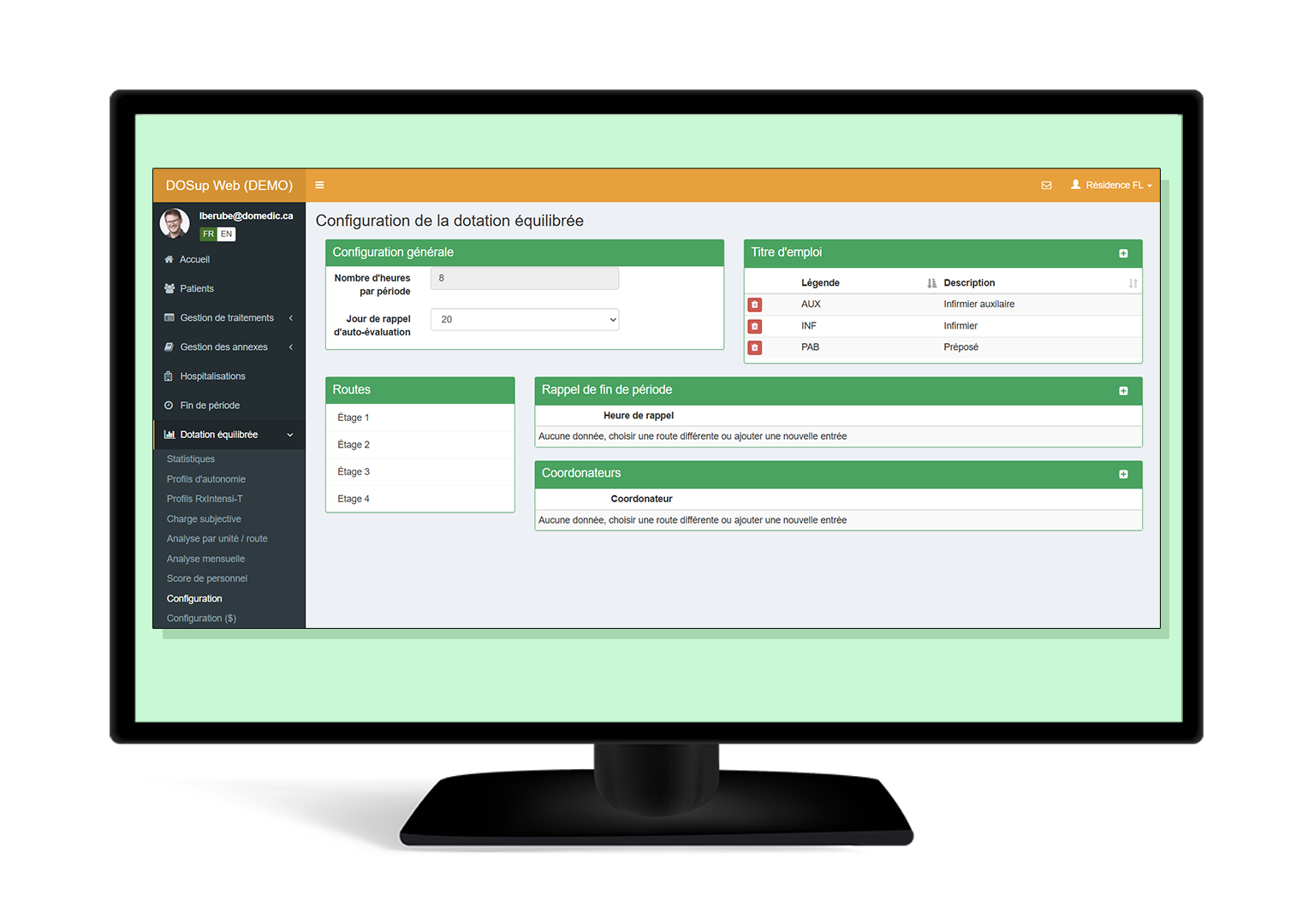An intuitive and scalable management portal dedicated to staff
The balanced allocation includes a secure management portal. Inside, the nursing staff can manage the data, enabling appropriate monitoring and analysis of the needs of each resident.

Up-To-Date Reports and Graphs for Precise Monitoring of Resident Needs
The Balanced Allocation section generates continuous reports and graphs, providing a clear overview of patient and staff needs in order to effectively adjust resources.

Adopt a Flexible Allocation
Static resource allocation is an outdated management model that fails to effectively meet patients' needs or support caregivers in handling increasingly demanding and complex tasks. Balanced resource allocation enables dynamic, real-world analysis by considering and adapting to current resident conditions and operational capacity.

Benefits for Your Patients and Your Organization
The Balanced Allocation module allows you to optimize the distribution of your human resources according to the changing needs of your residents.
Healthcare team
A Notable Improvement in Care Quality
Increased Mobilization of Staff
Dynamic and Flexible Resource Management
Operational Caregivers With Less Stress
Keeping Residents in Their Home Environment
Optimize Your Resources With BalanStaff
With a balanced allocation, ensure a healthier life for your patients and an optimal workflow for your teams.

What are the Balanced Allocation categories?
There are 4: the early learning approach, the vertical approach, the dynamic approach, and the progressive approach.
Are medications included in the allocation calculation?
They are the main factor that influences the quantity, difficulty, duration, and nature of the tasks to be performed.
How is the severity of the pharmacological profile assessed?
The RxIntensi-T index, calculated by an algorithm based on 14 criteria, indicates the complexity level of the patient profile.
What are the indicators for assessing the workload?
Users’ behavioral problems, employees’ anxiety/psychological distress and level of fatigue/exhaustion.
Who should participate in the analysis to evaluate the allocation?
The team: management, care, and HR in order to cover all the areas to be analyzed to obtain a fair and complete evaluation.
How is the balanced allocation evaluated?
Collect clinical data (profiles, severity index, etc.), analyze, adjust the allocation, evaluate the results.
What clinical observations are considered?
Recurrent falls and fallers, hospitalizations, infections, and external care (e.g. wound care, etc.).
How is a resident's severity assessed?
An assessment by a healthcare professional provides the independence profile that demonstrates clinical severity.



